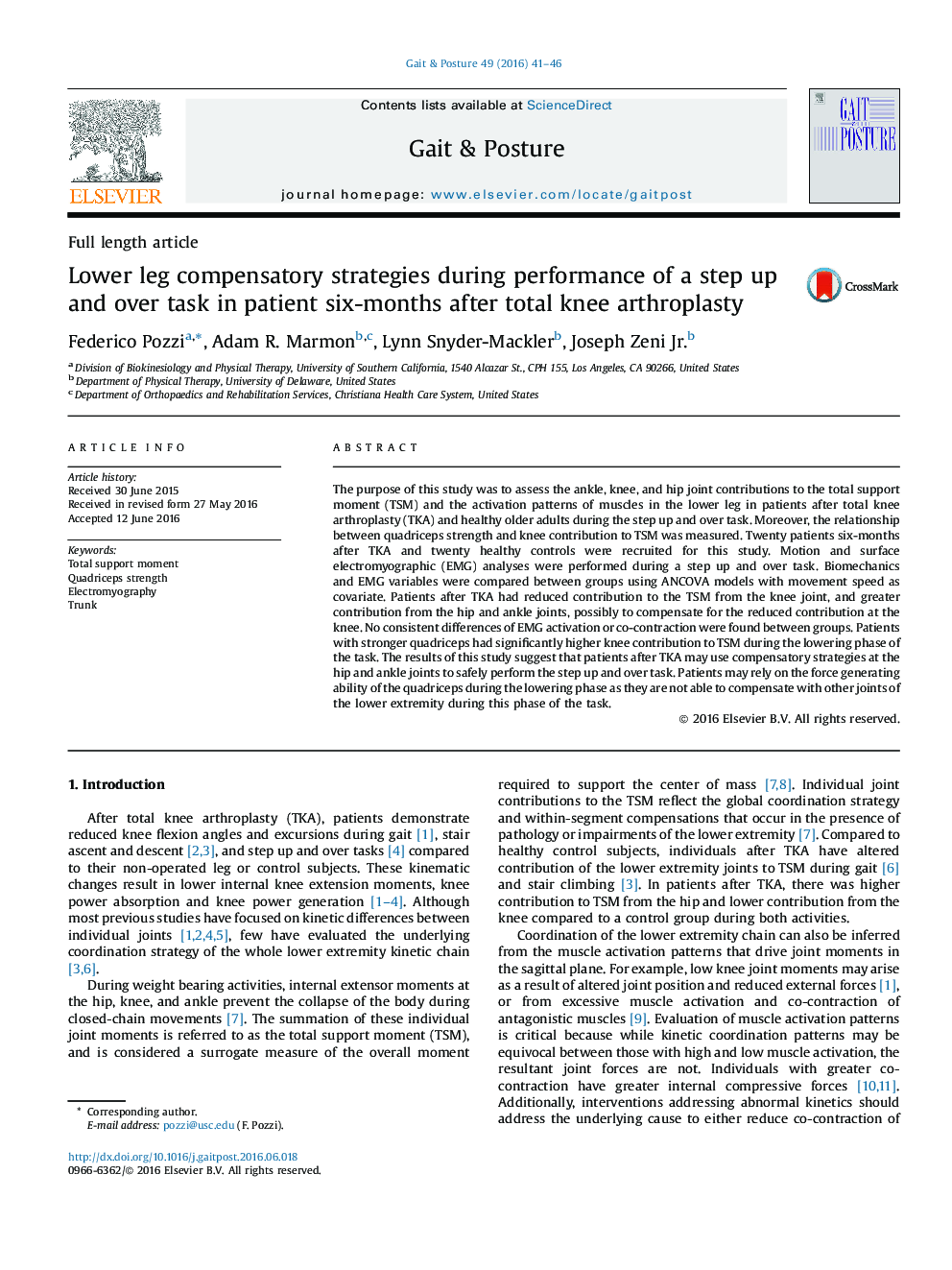| کد مقاله | کد نشریه | سال انتشار | مقاله انگلیسی | نسخه تمام متن |
|---|---|---|---|---|
| 6205390 | 1603846 | 2016 | 6 صفحه PDF | دانلود رایگان |
- We examined total support strategies during a high demanding task in patient after TKA.
- The ankle and hip joints can compensate for reduced reliance on the operated knee.
- Quadriceps strength is related to knee contribution during lowering from a step.
The purpose of this study was to assess the ankle, knee, and hip joint contributions to the total support moment (TSM) and the activation patterns of muscles in the lower leg in patients after total knee arthroplasty (TKA) and healthy older adults during the step up and over task. Moreover, the relationship between quadriceps strength and knee contribution to TSM was measured. Twenty patients six-months after TKA and twenty healthy controls were recruited for this study. Motion and surface electromyographic (EMG) analyses were performed during a step up and over task. Biomechanics and EMG variables were compared between groups using ANCOVA models with movement speed as covariate. Patients after TKA had reduced contribution to the TSM from the knee joint, and greater contribution from the hip and ankle joints, possibly to compensate for the reduced contribution at the knee. No consistent differences of EMG activation or co-contraction were found between groups. Patients with stronger quadriceps had significantly higher knee contribution to TSM during the lowering phase of the task. The results of this study suggest that patients after TKA may use compensatory strategies at the hip and ankle joints to safely perform the step up and over task. Patients may rely on the force generating ability of the quadriceps during the lowering phase as they are not able to compensate with other joints of the lower extremity during this phase of the task.
Journal: Gait & Posture - Volume 49, September 2016, Pages 41-46
